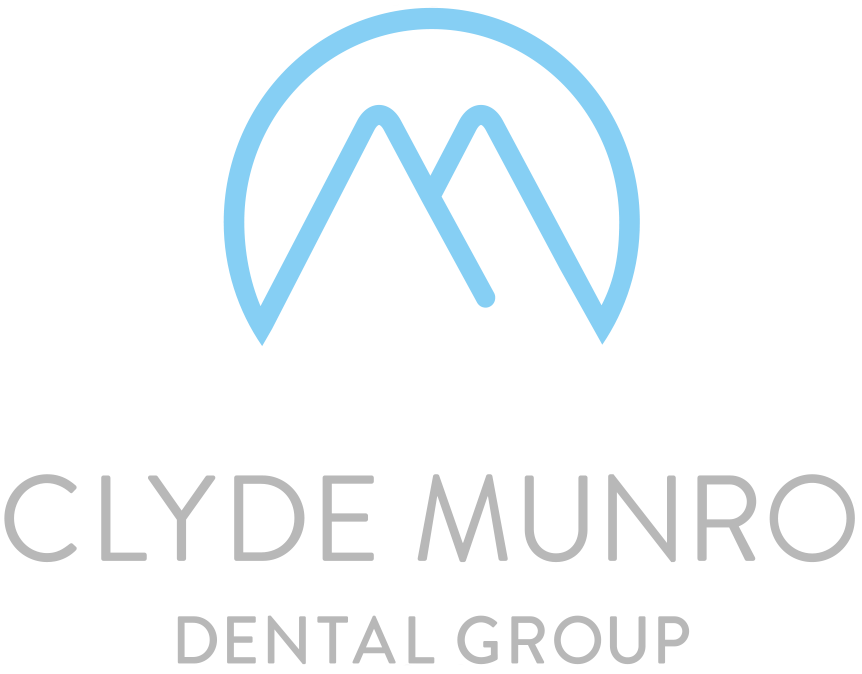Key Differences Between Dental Crowns & Veneers
Published: 09 October 2025
A common question our dentists at Clyde Munro get asked is, ‘what is the difference between dental crowns and veneers?’
Well, both are dental restoration methods that can improve the look of your teeth, as well as their functionality; however, one is more cosmetic than the other.
In this blog, we will explain exactly what a veneer is, what a crown is and the main differences between the two. We’ll also shed some light on the pros and cons of both so that you can be more confident with treatment options during your next visit to the dentist.
What is a veneer?
A veneer is a wafer-thin (usually 1-2mm in thickness), custom-made porcelain facing that is normally bonded to the front surface of an existing tooth to improve its appearance.
Veneers are most commonly used for cosmetic dentistry to enhance your smile and therefore can help to increase your confidence. For example, if you are suffering from discolouration and staining that can’t be rectified by whitening, you have chipped or worn teeth, misaligned or uneven teeth, gaps between teeth or even cracks or damage to enamel, veneers are an excellent solution if planned properly.
At Clyde Munro, we take a personalised approach to cosmetic dentistry, ensuring that your veneers complement your facial structure and proportions and match your tooth shade for a seamless and natural finish.
Please note, instead of veneers, people can opt for composite bonding, which is made from a tooth-coloured resin material that is sculpted directly onto the teeth, lasting for 5 to 7 years typically. This tends to be a cheaper and quicker option compared to porcelain veneers but does have some limitations.
For the purposes of the rest of this blog, we will be focusing on porcelain veneers when referring to veneers.
What is a dental crown?
Now that we know what a veneer is, we can better understand what a dental crown is. Crucially, a crown, sometimes referred to as a ‘cap’, covers the entire tooth structure above or at the gum line and is usually about 2mm in thickness.
Dental crowns are required when a tooth is severely decayed, broken or damaged, as they restore the tooth’s shape, size, strength and therefore appearance.
Crowns are often used after someone has undergone root canal treatment and a tooth is left weakened and brittle, or when a filling is no longer effective.
To fit a crown, more of the existing tooth needs to be filed down compared to bonding veneers. However, if you require a crown due to tooth decay, your dentist will first remove the decayed part of the tooth, and then they may need to build up the tooth before bonding the crown.
Dental crowns are typically made from porcelain or ceramic, but can also be made from porcelain fused to metal or just metal.
At Clyde Munro, veneers and crowns are usually custom-made in a dental laboratory, matching the shape, shade, texture and translucency required to blend in with your teeth.
Main differences between veneers & dental crowns
Now that we understand what both veneers and dental crowns are, let’s examine the main differences between the two.
Of course, it’s important to remember that your dentist will always recommend which dental treatment is the best course of action for you.
Purpose of treatment
As touched on above, veneers are a cosmetic procedure designed to perfect and improve your smile.
Meanwhile, dental crowns are required when you have a decayed or damaged tooth that requires treatment and protection.
Amount of tooth reduction & coverage of tooth
Veneers preserve more of the natural tooth but still require a small amount of preparation of the enamel from the front face of the tooth.
Meanwhile, dental crowns require reduction on all sides of the tooth to allow for the crown’s full coverage cap to be placed over the tooth so normal anatomy can be replicated and the crown fits into your bite.
If significant changes or multiple number of veneers and crowns are planned, it is wise to consider a diagnostic wax up or digital smile design to show you what the outcome would look like before any reduction of the natural teeth is done. These mock-ups can be transferred to your mouth in a reversible manner to give you a complete indication of any planned changes.
Materials used
Veneers are usually made from porcelain or composite resin (composite bonding). Meanwhile, permanent dental crowns are made from a range of hardwearing materials, including porcelain, stainless steel, gold, platinum, or a combination of porcelain and metal.
Temporary veneers and crowns are usually made using acrylic-based materials and must be taken with them in this temporary phase.
Longevity
As touched on above, the materials used affect the longevity of the dental work carried out.
With good oral hygiene and daily care, porcelain veneers and crowns typically last between ten and fifteen years.
Pros & cons of veneers
Here, we’ll walk you through the various pros and cons to keep in mind when considering veneers.
Pros of veneers
- Instantly improves your smile and increases your confidence
- Natural look and feel – veneers are designed to match your teeth in size, shape and colour
- Long-lasting and durable once bonded and occlusion conformed to
- Minimally invasive procedure but may still require some irreversible tooth preparation of the enamel of your tooth
Cons of veneers
- Not suitable for teeth with major damage or decay
- Irreversible procedure due to the removal of enamel and dentine
- There is a slim possibility that they will chip or debond
Pros & cons of crowns
Now we’ll take a look at the pros and cons of crowns.
Pros of dental crowns
- Thanks to your entire tooth being covered by a crown, it is structurally stronger than the large filling it covers that was previously restoring the tooth
- If you opt for a porcelain crown, it has a similar look and feel to your teeth.
- Metal crowns are very strong
Cons of dental crowns
- More of your natural tooth is removed to allow for a crown to conform to your other teeth and bite
- Porcelain can chip over time resulting in the crown needing to be replaced
- Like any dental restorations, the natural teeth can still decay if your oral hygiene or diet is not optimal
Conclusion
And there you have it; you now have some solid background knowledge about veneers vs dental crowns. If you’re considering discussing either of the two dental procedures, we recommend getting in touch with your dentist for a full consultation to assess your needs.
Find your practice on our website to learn more about veneers and crowns, as well as other cosmetic and dental procedures.





